
There are about as many productions of Shakespeare’s Romeo and Juliet as there are opinions about it.
It is a dramaturgical rite of passage — to passionately argue in its defense and to staunchly decry its weakness. From our first encounter with the ill-fated Montagues and Capulets, we denounce the characters whose actions simultaneously seems too naive and romantic, selfish and destructive — whose actions and motivations seem simple and broadly drawn. And yet, surely mine was not the only high school teacher to expound upon these shortcomings, while casually forgoing discussion of the complex sexual and sociopolitical undercurrents of the text (as well as its myriad double entendres).
With each encounter with the text and its innumerable interpretations, it at once becomes increasingly rote and familiar, while also becoming an exciting blank canvass for new generations to paint upon. It is simultaneously a bite of theatrical comfort food, while continuing to push boundaries centuries after its publication.
And so, it is no small challenge to mount a production of Romeo and Juliet. Mill Valley’s Throckmorton Theatre is the latest to attempt such a daunting undertaking. And, as if the baggage associated with one of the most famous plays in known history were not enough, they have taken upon themselves the added challenge of mounting it as their first venture into immersive theater. It is no easy task, but fortunately, it is largely successful.
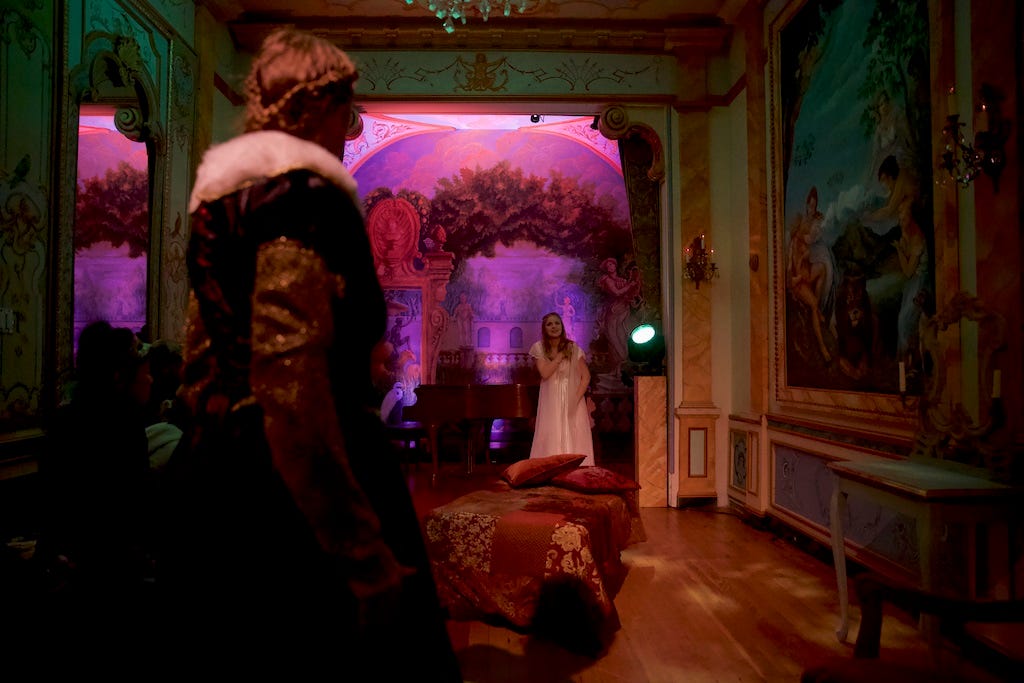
Upon arrival at the small theatre in downtown Mill Valley, I was greeted with a masquerade mask and a rolled scroll, my program. While waiting, an attendant took small groups aside, at least several of whom seemed unaware of the nontraditional staging that was being utilized, and explained how the evening would progress.
Soon, an accordion player descended the staircase and led out us out the front door, to the streets surrounding the theater, where we witness the opening feud between the rival families, and are led down the block where Romeo declares his love for Rosaline to Benvolio. While both scenes play out largely as they would under a proscenium, they act as an effective introduction to the tone of the evening. The iambic pentameter and largely traditional Shakespearean garb are intermixed with the the modern streets of Mill Valley, standing in for Verona. The classic story unfolds with occasional (and accidental) real world interruptions, whether they be a bit of rain, or an uncooperative driver essentially parking on stage.
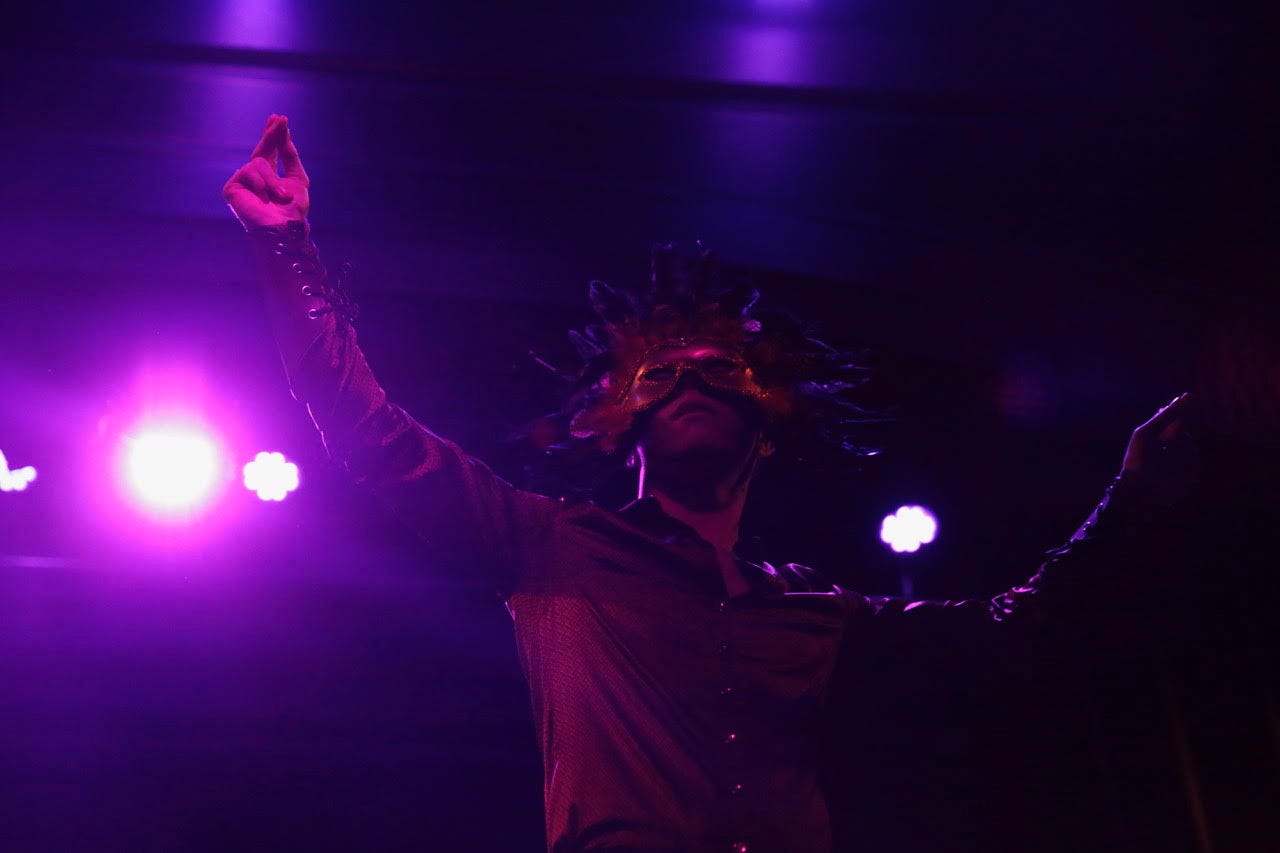
This tension between traditional and modern continues once we are led back inside and enter the main theater space. Cleared of seating, but for 2 rows in the back of the house, the proscenium takes on the air of a banquet hall or concert arena. And as we share a glass of champagne and a dance in the Capulet ball, the performers on stage sing modern songs. From Aerosmith to Billy Joel, the anachronistic song choices highlight the fusion of past and present. Though sometimes jarring, these cues more than anything point to the timelessness of the piece, of its themes, and its title characters’ oft-derided motivations.
Get Brian Resler’s stories in your inbox
Join Medium for free to get updates from this writer.
SubscribeSubscribe
After Juliet and Romeo’s most famous encounter (box seats standing in for Juliet’s balcony), the audience splinters into three groups and is led through the Throckmorton theatre buildings balcony, lobby, and salon where they cycle through the remainder of the play’s scenes. While an apparent necessity to cycle an audience this size through the smaller and more intimate spaces, such as the Friar’s quarters or Juliet’s bedroom, the nonlinearity has several effects, some good, some less so. While the text quickens and intensifies as it builds to its conclusion, this buildup is somewhat muted as scenes are witnessed out of order. Context also becomes muddled, as we witness a cheerful, lovestruck Romeo moments after we left him, horrified by his role in Tybalt’s death.
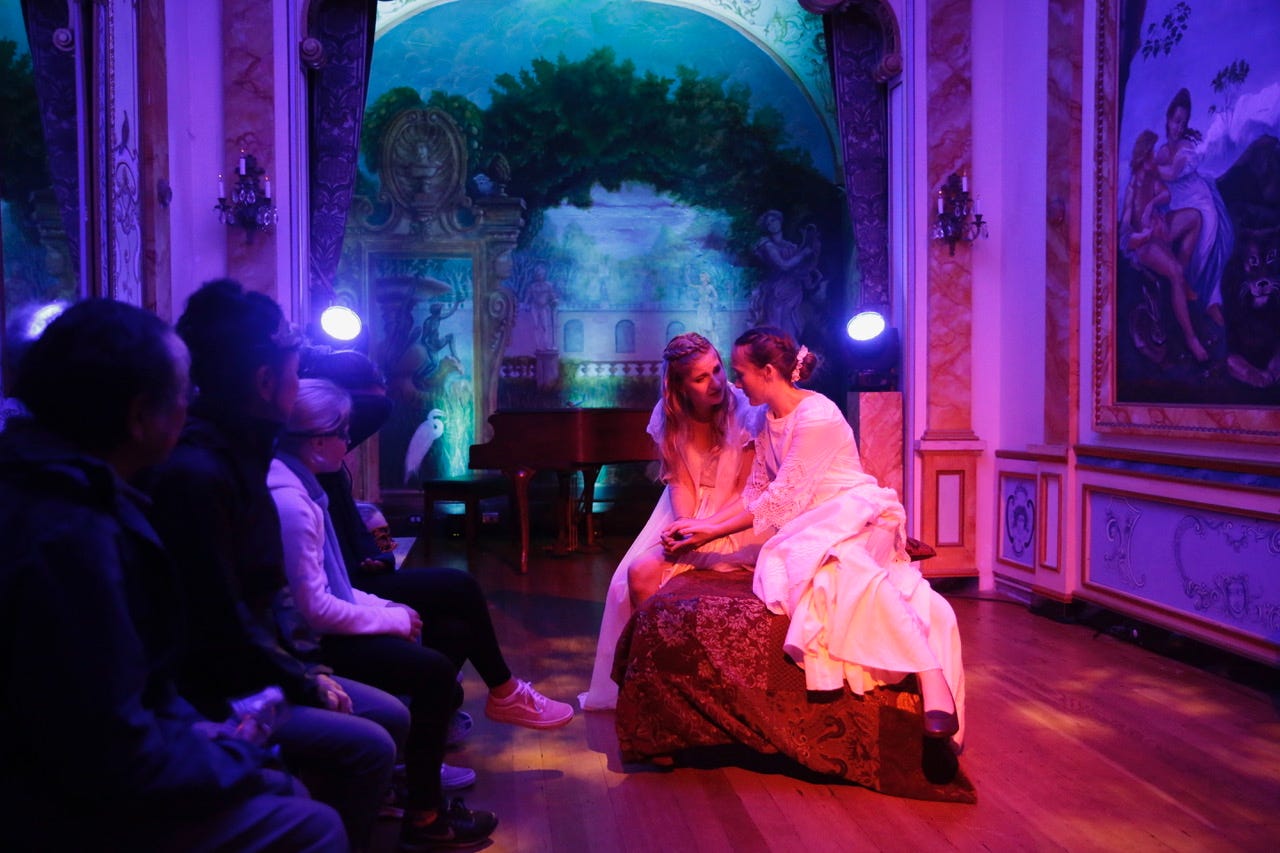
And yet, what is lost in context is more than made up for in powerful, personal performances by actors who are more than up for the challenge set forth by their iconic roles. In isolation, Andre Amarotico’s Romeo is a cheerful, optimistic, innocent young romantic. While Juliet is unseen until entering her bedroom (for me, the last of the cycle of locations), it is even more apparent that Romeo is a child, more in love with the concept of love. Meanwhile, Juliet (Gillian Eichenberger) is the more grown up, practical one of the two (relatively speaking). Her scenes play out all at once in her bedroom, the intimacy of the space and of the performance is more than enough to sell her personal stakes as she progresses from excitement over her “wedding night” to despair over her lover’s banishment — justifying the enormous and often unbelievable steps that lead to her tragic end.
Temporally condensing the leads’ roles also has the interesting effect of highlighting how little time the two spend together, while enhancing their relationships with other characters. Romeo’s relationship with the Friar, in particular, is well served.
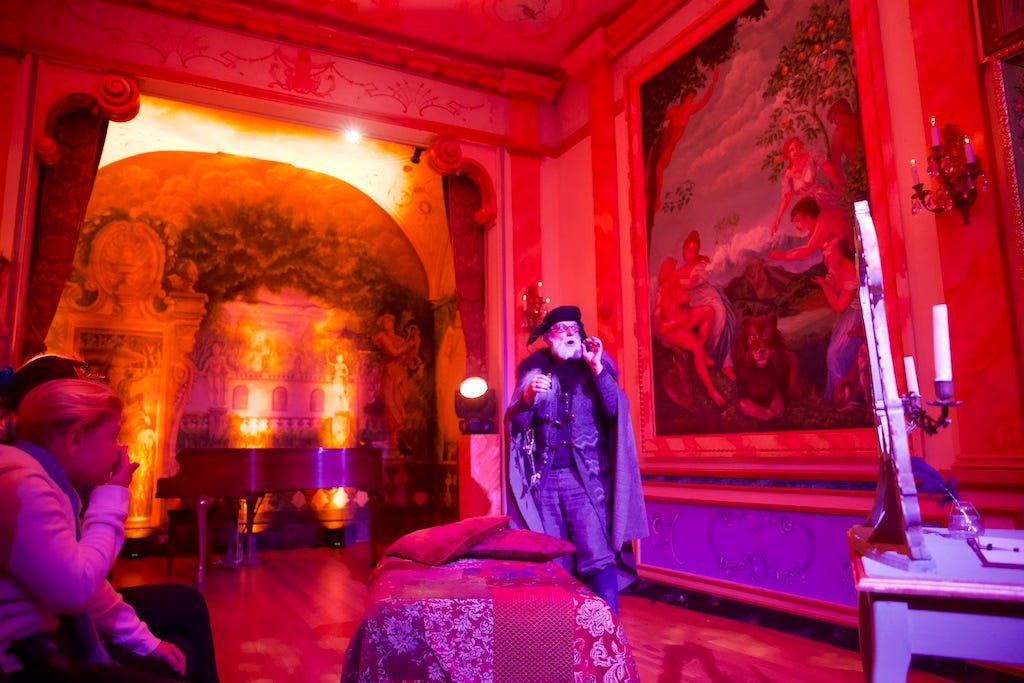
The production’s strongest moments are its last. The accordionist returns to lead us back into the theater, two of the younger members of the cast sing a beautiful “Ave Maria,” and we leave a candle by Juliet’s funeral bed. We process to the theater’s balcony, and, physically, we are further from the actors than we have been at any other point. Yet their cries feel as if we are on stage with them. As the star-crossed lovers die, the lights darken. There is no curtain call, and the weight of the tragedy lingers. It’s an effective, unexpectedly powerful moment. And it’s one that left me eager for more — eager to re-explore a text that I’d long grown tired of, and eager to see what’s next for a company that is just getting started in the world of immersive theatre.
Romeo & Juliet is playing through February 17 at the Throckmorton Theatre, 143 Throckmorton Avenue, Mill Valley, CA 94941. Tickets are $35 and are available here.
NoPro is a labor of love made possible by our generous Patreon backers:join them today!
In addition to the No Proscenium web site, our podcast, and our newsletters, you can find NoPro on Twitter, Facebook, YouTube, Instagram, in the Facebook community Everything Immersive, and on our Slack forum.
Office facilities provided by Thymele Arts, in Los Angeles, CA.


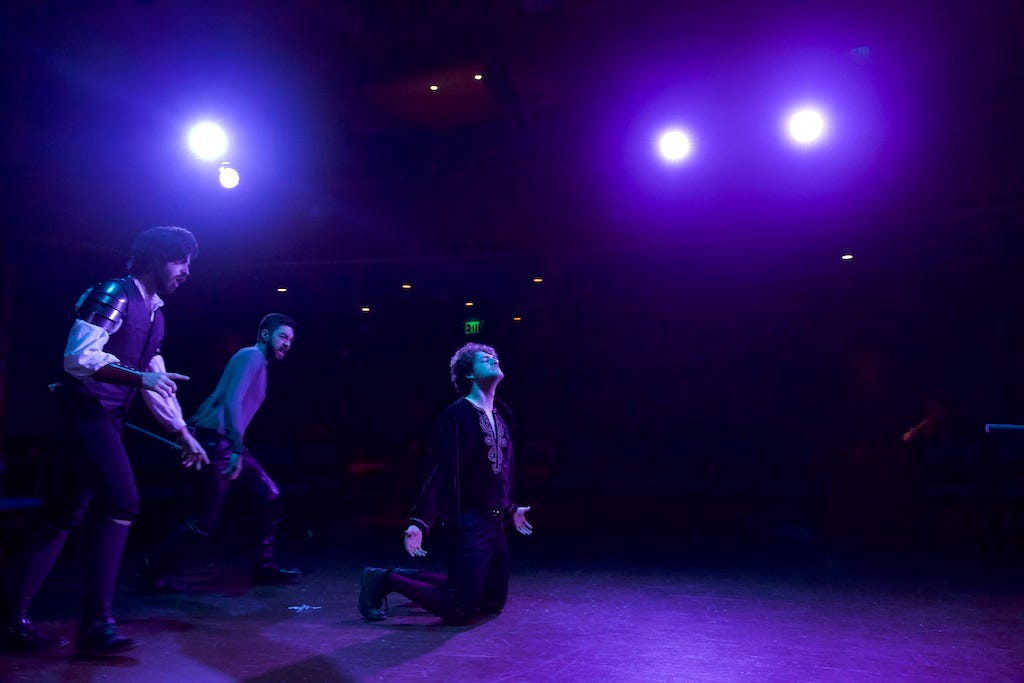

















Discussion